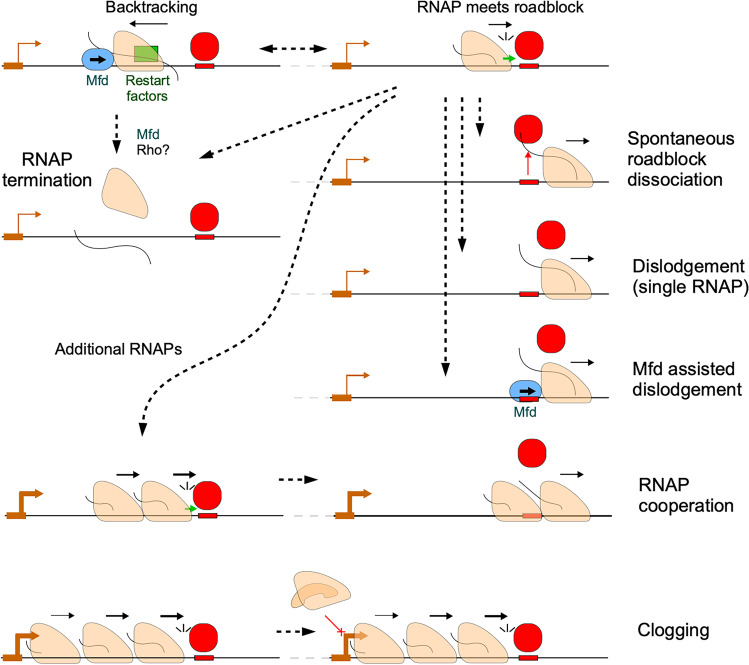Fig. 1.
Possible outcomes of RNAP-roadblock interactions. When a roadblock protein (red) binds to the DNA and blocks the progression of an RNAP (tan), the RNAP may backtrack along the DNA. However, specialized proteins such as Mfd (blue) or transcript cleavage factors (green) can help reactivate the backtracked RNAP. If the RNAP is not reactivated, it is subject to termination by Mfd or possibly Rho. Alternatively, RNAP may be able to pass the roadblock as a result of spontaneous (unassisted) dissociation of the roadblock protein. RNAP may also actively dislodge the roadblock protein from the DNA, with or without the assistance of Mfd. Multiple RNAP at a roadblock site generally increase the fractional read-through due to RNAP cooperation, which can either increase the roadblock dislodgement or reduce RNAP backtracking and termination. However, when multiple RNAP build up at a roadblock, the promoter site may become obstructed, blocking further initiation from the promoter, in a process known as clogging

